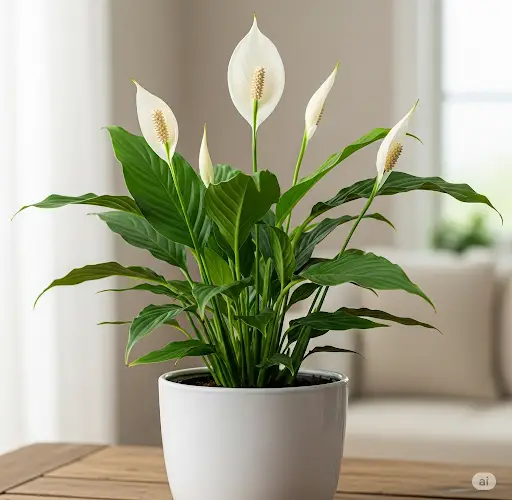The Peace Lily (Spathiphyllum) is a popular indoor plant known for its elegant white flowers and lush green foliage. It’s loved not only for its aesthetic appeal but also for its ability to purify indoor air. However, many plant owners struggle with keeping their Peace Lily healthy—especially when it begins to droop, its leaves turn yellow, or it stops blooming.
If your Spathiphyllum looks sad and lifeless, don’t be too quick to give up. There’s a simple and natural solution that can bring your plant back to life, encouraging strong leaf growth and even triggering new blooms. It’s a quick, cost-effective method using a homemade tonic that you can prepare in minutes.
Why Peace Lilies Decline
Before we get to the revitalizing solution, it’s important to understand why Peace Lilies often struggle:
-
Overwatering or underwatering: Both extremes stress the plant and cause leaf yellowing or root rot.
-
Low humidity: Peace Lilies love moisture and suffer in dry indoor environments.
-
Lack of nutrients: Without occasional feeding, the plant lacks the energy to grow or bloom.
-
Poor lighting: Though they tolerate low light, Spathiphyllums thrive best in bright, indirect sunlight.
-
Old soil: Over time, soil becomes compacted and loses its nutrient content.
Now, let’s look at a solution that targets several of these issues at once.
The Natural Revitalizer: Yeast-Based Plant Tonic
A simple yeast solution can work wonders for your Peace Lily. Baker’s yeast (used in breadmaking) isn’t just for baking—it contains beneficial microorganisms, enzymes, and vitamins that promote root health and stimulate leaf and flower development. This makes it ideal for reviving tired or underperforming plants.
When added to water and applied to the soil, yeast improves microbial activity, enriches the root zone, and helps the plant absorb nutrients more efficiently.
How to Prepare the Yeast Solution
Ingredients:
-
10 grams of fresh yeast (or 1 teaspoon of dry yeast)
-
1 teaspoon of sugar
-
1 liter of lukewarm water
Instructions:
-
In a container, dissolve the yeast and sugar in lukewarm water.
-
Let the mixture sit in a warm place for about 1–2 hours. This allows the yeast to activate and begin fermenting.
-
Stir the mixture again before use.
-
Water the Peace Lily at the base of the plant, making sure the soil is evenly moistened.
Tip: Only apply to slightly damp soil. If the soil is bone dry, water with plain water first, then apply the yeast solution a day later.
How Often to Use It
Use this treatment no more than once a month. Overuse can cause nutrient imbalances or promote mold growth. For best results, apply during the plant’s active growing periods—usually from spring through early autumn. However, if your plant is showing signs of distress in winter, a single application can still help jumpstart recovery.
What to Expect After Application
Within 7–14 days, you may begin to notice improvements:
-
Leaves become greener and firmer
-
New leaf shoots may appear from the base
-
The plant stands more upright and looks more vigorous
-
Under the right conditions, buds may begin to form
This tonic not only revives but strengthens the plant’s natural growth processes, improving its overall vitality.
Additional Care Tips for Peace Lilies
While the yeast solution is powerful, combine it with proper care for best results:
-
Lighting: Place the plant in a location with bright, indirect sunlight. Avoid harsh midday sun.
-
Watering: Keep the soil evenly moist but not soggy. Peace Lilies are sensitive to overwatering.
-
Humidity: Mist the leaves regularly or place a humidity tray nearby to mimic their tropical habitat.
-
Cleaning: Wipe dust from the leaves with a damp cloth to help with photosynthesis.
-
Repotting: If roots are crowding the pot, consider repotting in fresh, well-draining soil.
Final Thoughts
Peace Lilies are forgiving, but they do need a bit of attention to thrive. When your plant looks limp or refuses to bloom, this yeast-based solution offers a natural and effective way to boost growth and vitality. It’s easy to make, safe for the plant, and often shows visible results in just a few weeks.
So if your Spathiphyllum is struggling, give this simple trick a try. You might be surprised at how quickly it rebounds with rich foliage and elegant blooms—even if it looked hopeless before.


